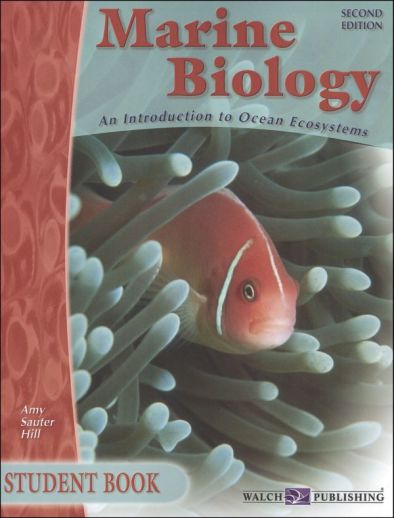We use cookies to make your experience better. To comply with the new e-Privacy directive, we need to ask for your consent to set the cookies. Learn more.
Marine Biology Text
Looking for a marine biology course? Well, we've got you covered. Marine Biology is a brief, high-interest course that can be used as a short course alone, or in addition to your current earth science or biology curriculum to add an aquatic dimension to your studies. In 14 chapters, the text explores ocean ecosystems such as coral reefs, islands, estuaries, bays, beaches, tide pools, ocean, the abyss, and polar seas. The focus is on introducing and describing animals from each of these diverse ocean habitats and showing how each organism functions in its environment and interacts with neighboring organisms. There is a secular and heavy-handed environmentalist slant, however, which is most apparent when the text examines threats to each ecosystem and its inhabitants. Because the course focuses on specific ecosystems, it is also less comprehensive and in-depth than Apologia's Marine Biology course. The student text features glossy pages, an abundance of colorful photos, bold vocabulary words, and questions for the student sprinkled throughout. A teacher guide and a lab manual complement the student book and offer answers to discussion questions and hands-on lab activities, respectively. The lab manual contains 14 in-depth labs such as mapping the seafloor, effects of wave action on a barrier island, doing a wetland study, analyzing sand samples, observing the effects of varying salinity in algae, and more. Each lab consists of a list of materials, a lengthy written procedure, data tables, questions to answer, and suggestions for additional research using the library and internet. The equipment needed is not extensive, although you will have to find or purchase some aquatic organisms (plankton, common bioluminescent creatures, a hydra and other more common aquatic plants and animals), a water test kit, a hydrometer, and a few other items. The teacher's guide contains answers to the questions in the student text and a teacher's version of the lab experiments, including where to locate the specialized lab supplies, additional procedural information, and answers to the lab questions. - Jess
| Product Format: | Softcover Book |
|---|---|
| Brand: | Walch Education |
| Grades: | 9-AD |
| ISBN: | 9780825143236 |
| Length in Inches: | 10.75 |
| Width in Inches: | 8.5 |
| Height in Inches: | 0.5 |
| Weight in Pounds: | 1.2 |

